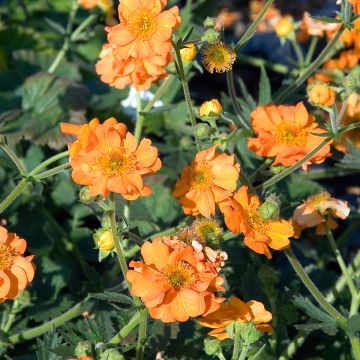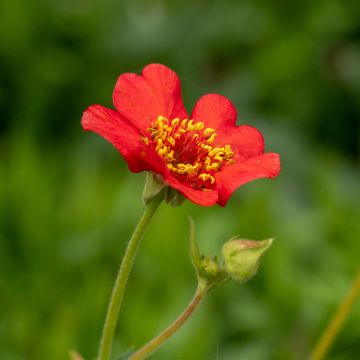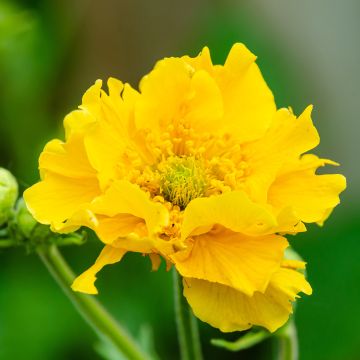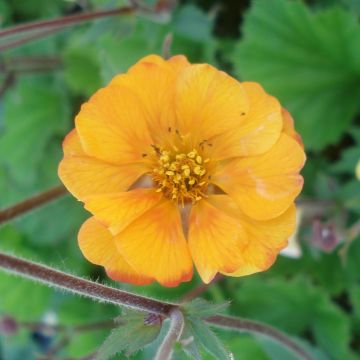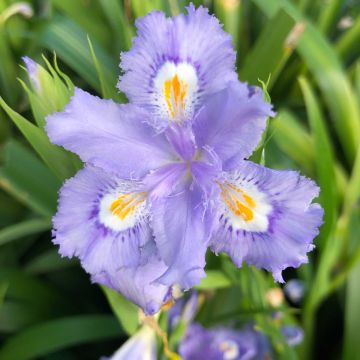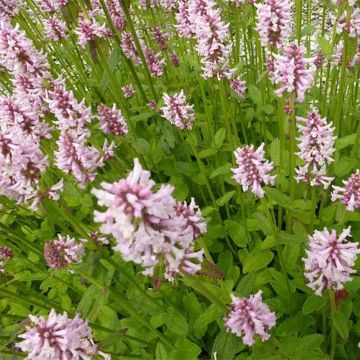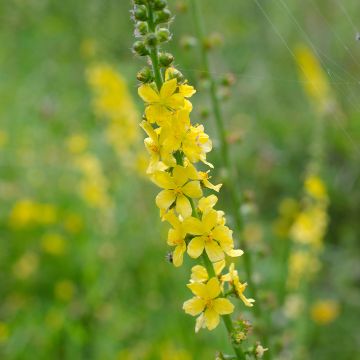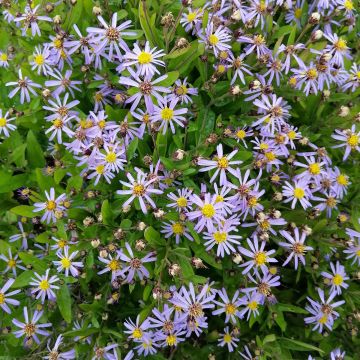

Geum rivale - Water Avens
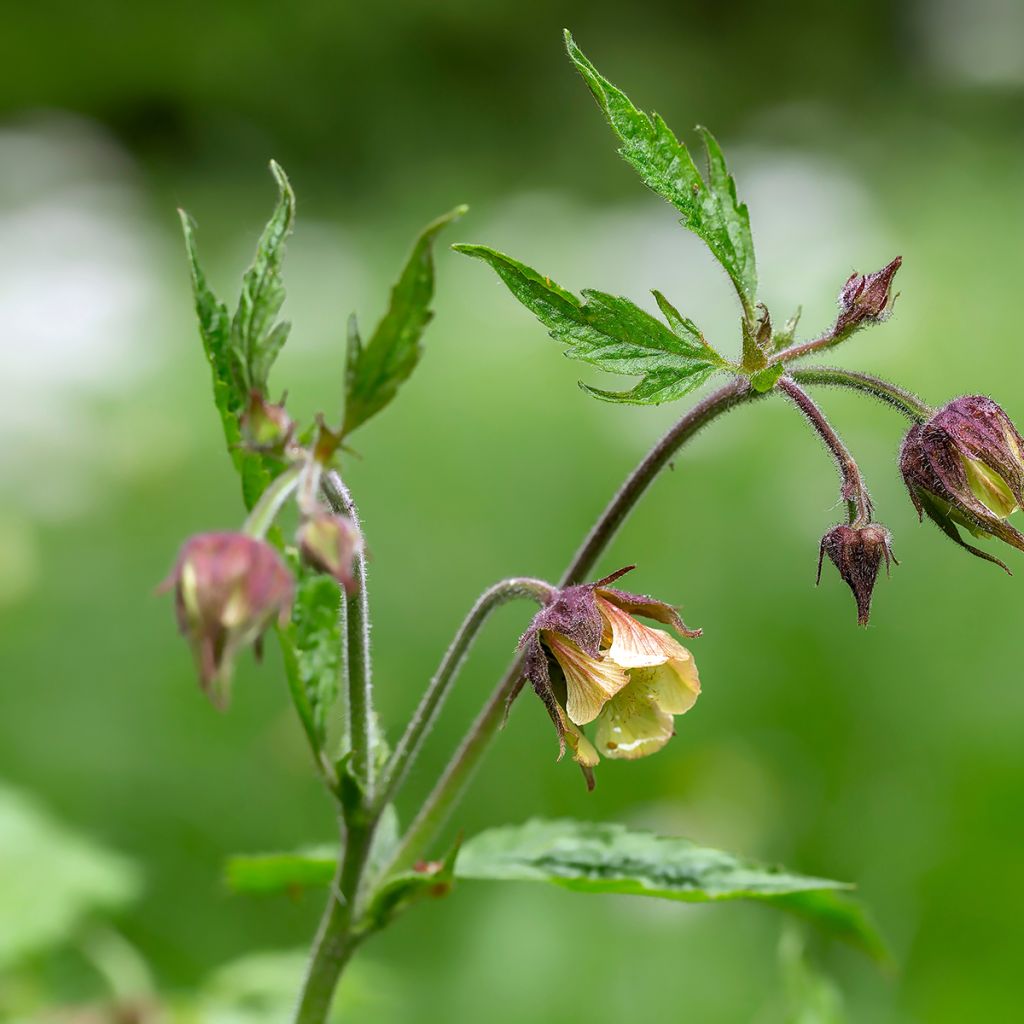

Geum rivale - Water Avens


Geum rivale - Water Avens


Geum rivale - Water Avens


Geum rivale - Water Avens


Geum rivale - Water Avens


Geum rivale - Water Avens
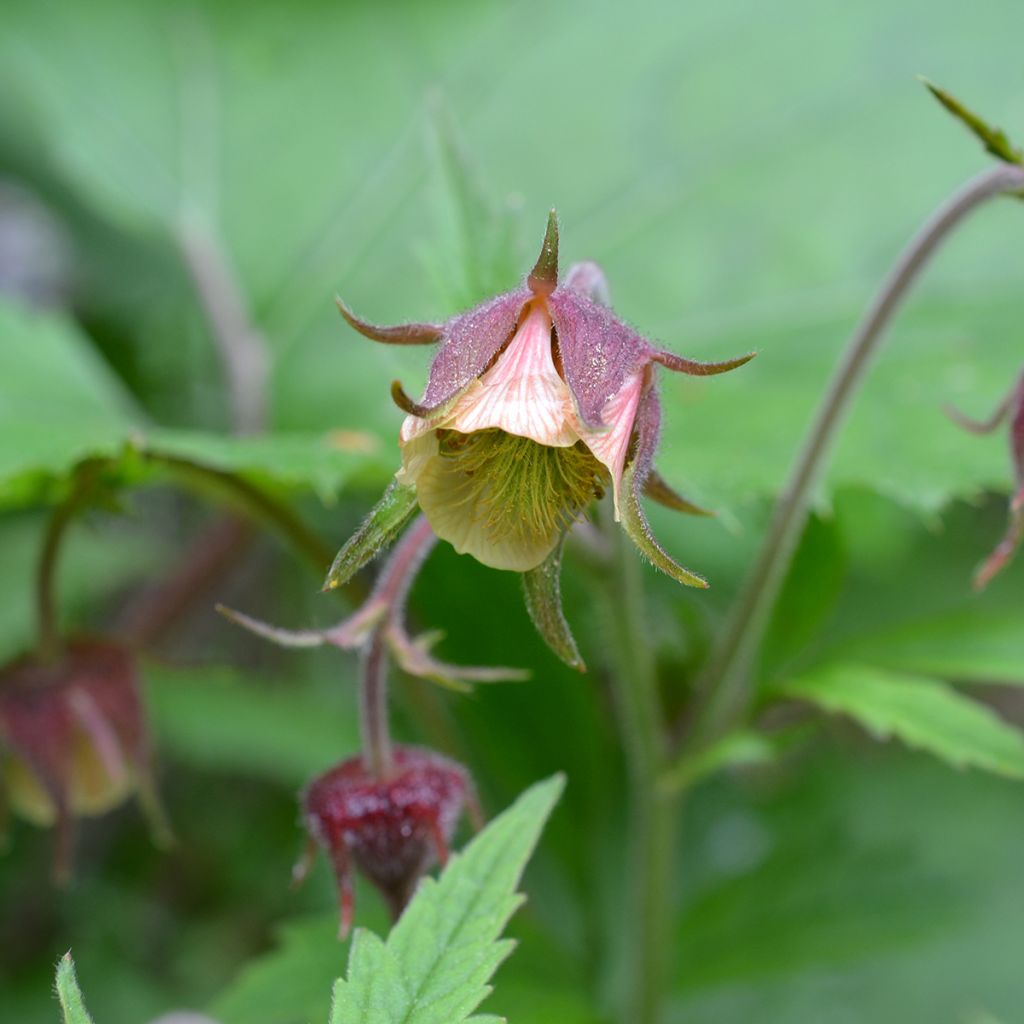

Geum rivale - Water Avens


Geum rivale - Water Avens


Geum rivale - Water Avens
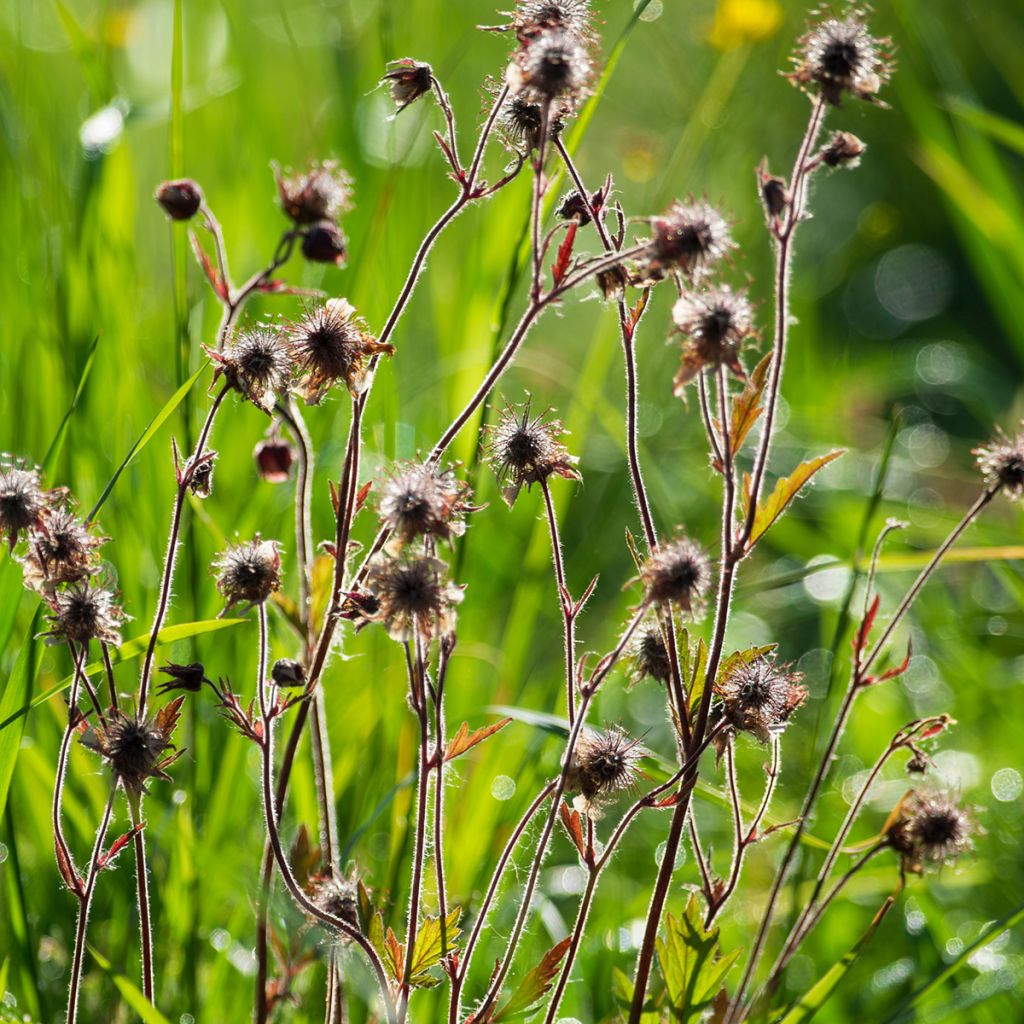

Geum rivale - Water Avens


Geum rivale - Water Avens
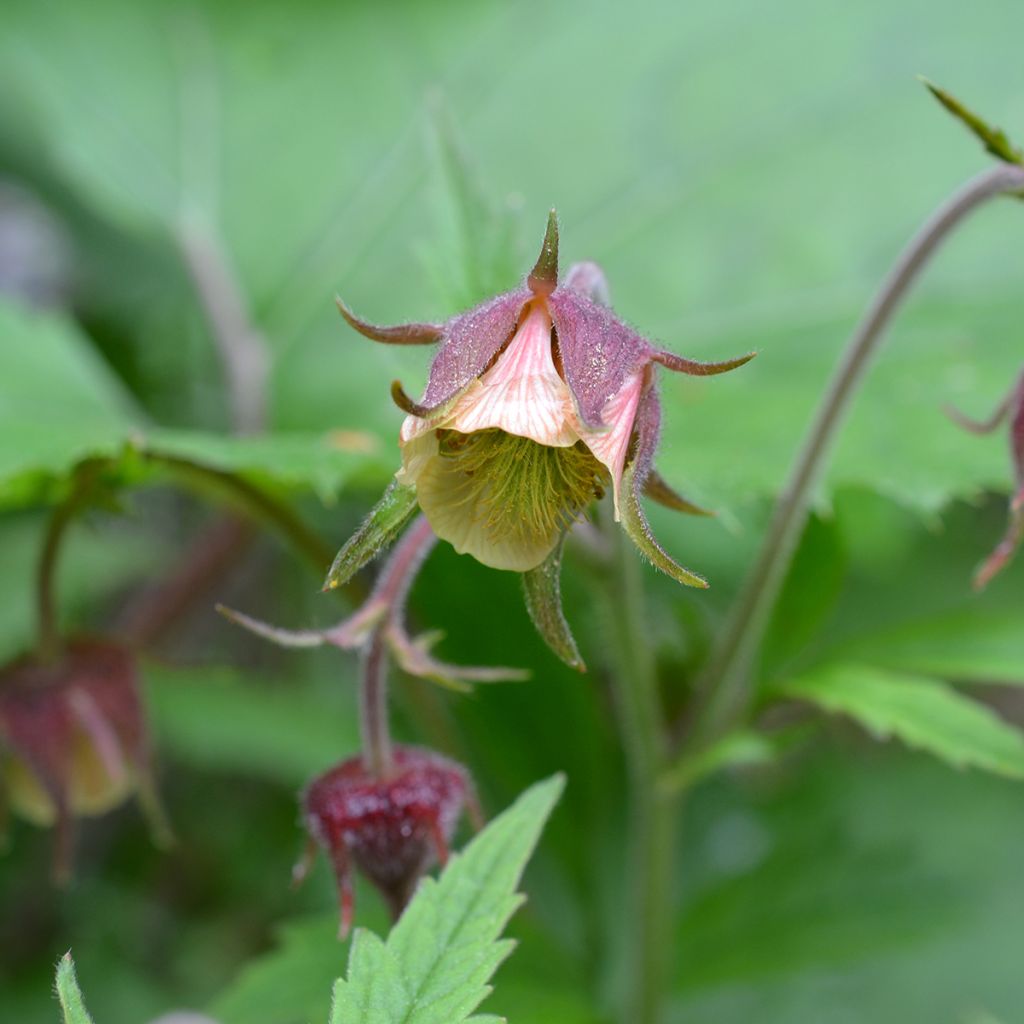

Geum rivale - Water Avens


Geum rivale - Water Avens


Geum rivale - Water Avens


Geum rivale - Water Avens


Geum rivale - Water Avens
Geum rivale - Water Avens
Geum rivale
Water Avens, Purple Avens
Did not take. Sent too early in the season.
Dany , 29/04/2024
This item cannot be shipped to the selected country
Delivery charge from €5.90
More information
Schedule delivery date,
and select date in basket
This plant carries a 12 months recovery warranty
More information
We guarantee the quality of our plants for a full growing cycle, and will replace at our expense any plant that fails to recover under normal climatic and planting conditions.
From €5.90 for pickup delivery and €6.90 for home delivery
Express home delivery from €8.90.

Does this plant fit my garden?
Set up your Plantfit profile →
Description
From April to June, the wood avens, also known as river avens or brook avens, bears delicate flowers in shades of pink to reddish-orange, veined with purple, at the end of its flexible and hairy reddish-brown stems. Its dry fruits are feathery and catch the light with their hairs. Its foliage forms a rosette of densely tufted, deeply lobed, and velvety leaves, with an upright habit. Native to wet habitats in our regions, it thrives in rich, moist soils that can even tolerate temporary immersion and full sun, as long as the soil remains moist. A small perennial plant with abundant flowering, the wood avens is easy to grow and will look stunning in a "Cottage" style garden bed or a fresh rockery.
Originally from Europe and Asia and belonging to the Rosaceae family, the wood avens is a hardy perennial herbaceous plant, capable of withstanding temperatures as low as -15°C (5°F). Here in France, it is found in humid places, especially in mountainous areas. It bears graceful bell-shaped flowers, about 3cm (1in) in diameter, on purplish stems. Its deciduous leaves are deeply lobed, with the terminal leaflet being larger and trilobed, and have a beautiful medium green colour. It has an upright habit, reaching a height of 50cm (20in) and a width of 60cm (24in). Its basal clump grows from rhizomes, making it an effective ground cover.
It thrives in either full sun or partial shade, in slightly acidic to calcareous, moist, humus-rich, and well-drained soil. Under favourable conditions, the plant readily self-seeds.
This elegant plant, with its subtle colors, blends well in cottage gardens and curate gardens. Why not also try it in a more contemporary bed, where it will look wonderful alongside 'Black Barlow' Columbine and 'Blackfield' Persicaria. It also suits well the edges of water bodies and pond borders. In a fresh rockery, combine it with carpets of lady's mantle, rock cress, and creeping bugleweed.
The roots are aromatic and edible, with a taste reminiscent of liquorice and cloves. Native Americans use them to make a drink similar to hot chocolate. They are also used in medicine, like in the case of Geum urbanum, for their astringent, anti-inflammatory, and febrifuge properties.
Report an error about the product description
Geum rivale - Water Avens in pictures
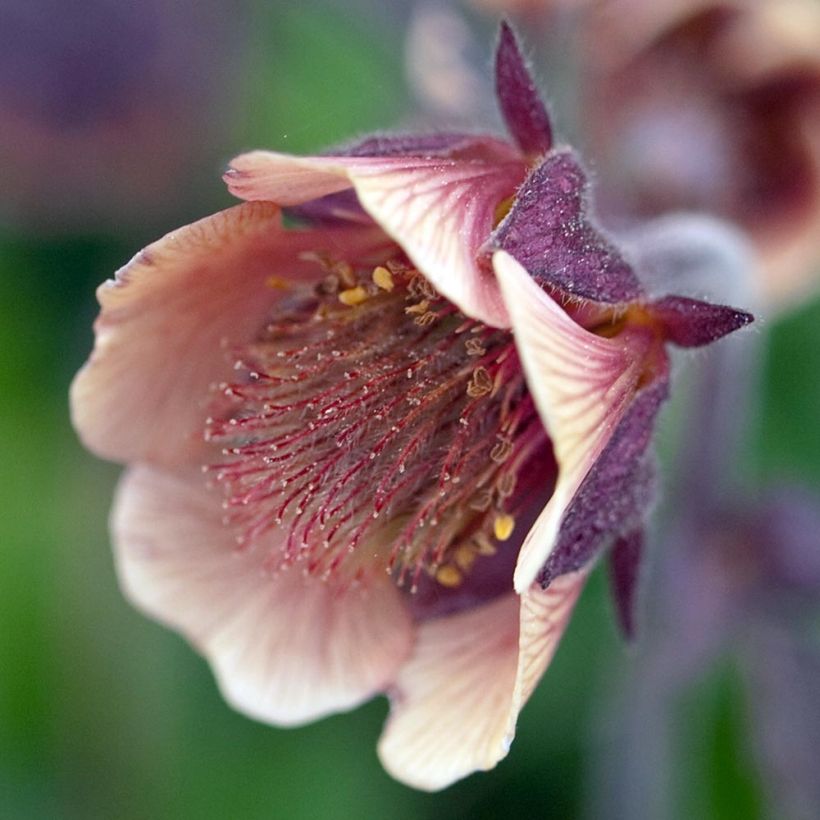

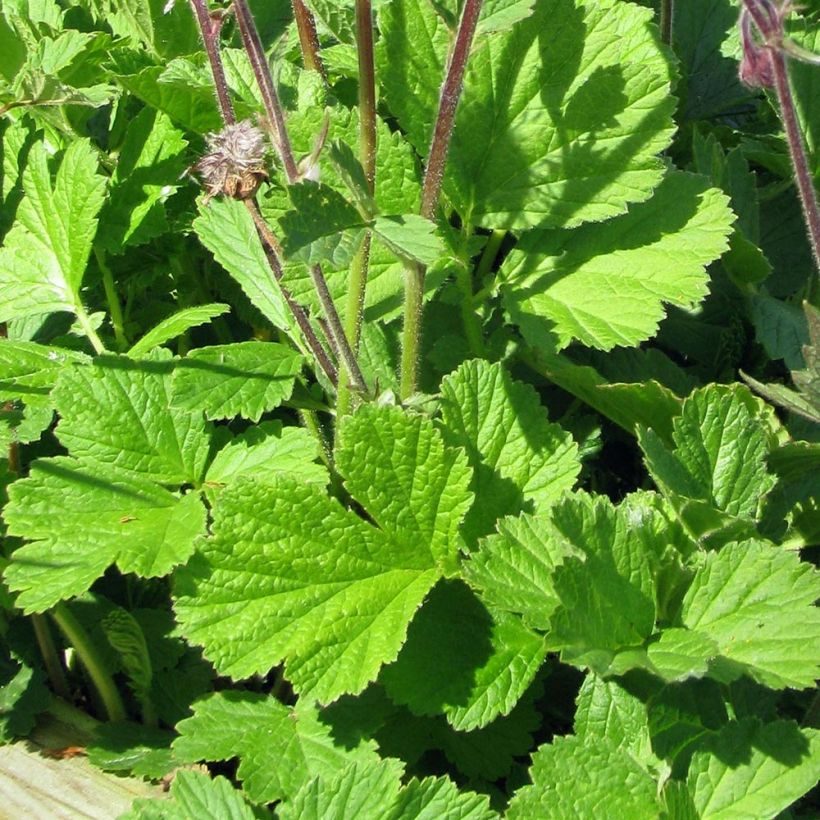

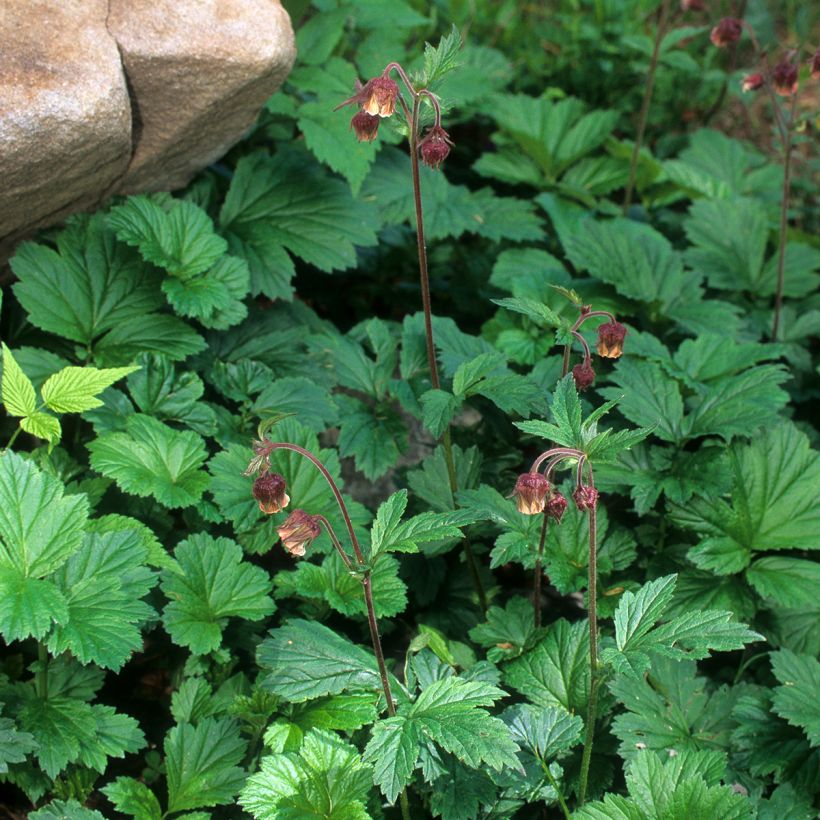

Flowering
Foliage
Plant habit
Botanical data
Geum
rivale
Rosaceae
Water Avens, Purple Avens
Western Europe
Other Geum - Avens
Planting and care
This Geum is a perennial herbaceous plant, hardy up to -20 °, likes fresh and moist soils, it will not tolerate excessive winter humidity, so it will be necessary to avoid waterlogged soils in winter.
Planting can be done in spring or autumn. Be sure to regularly remove faded flowers to encourage the emergence of new flower buds and ensure continuous flowering. Since Geum has a relatively short lifespan, it is recommended to divide the clumps every 3 or 4 years, in spring or autumn. An organic compost application at their base in spring is beneficial for them.
Very resistant to diseases, Geums are sometimes prone to attacks by sawfly larvae, which can damage the foliage. Excessive drought can also make Geums susceptible to powdery mildew.
Planting period
Intended location
Care
-
, onOrder confirmed
Reply from on Promesse de fleurs
Summer flowering perennials
Haven't found what you were looking for?
Hardiness is the lowest winter temperature a plant can endure without suffering serious damage or even dying. However, hardiness is affected by location (a sheltered area, such as a patio), protection (winter cover) and soil type (hardiness is improved by well-drained soil).

Photo Sharing Terms & Conditions
In order to encourage gardeners to interact and share their experiences, Promesse de fleurs offers various media enabling content to be uploaded onto its Site - in particular via the ‘Photo sharing’ module.
The User agrees to refrain from:
- Posting any content that is illegal, prejudicial, insulting, racist, inciteful to hatred, revisionist, contrary to public decency, that infringes on privacy or on the privacy rights of third parties, in particular the publicity rights of persons and goods, intellectual property rights, or the right to privacy.
- Submitting content on behalf of a third party;
- Impersonate the identity of a third party and/or publish any personal information about a third party;
In general, the User undertakes to refrain from any unethical behaviour.
All Content (in particular text, comments, files, images, photos, videos, creative works, etc.), which may be subject to property or intellectual property rights, image or other private rights, shall remain the property of the User, subject to the limited rights granted by the terms of the licence granted by Promesse de fleurs as stated below. Users are at liberty to publish or not to publish such Content on the Site, notably via the ‘Photo Sharing’ facility, and accept that this Content shall be made public and freely accessible, notably on the Internet.
Users further acknowledge, undertake to have ,and guarantee that they hold all necessary rights and permissions to publish such material on the Site, in particular with regard to the legislation in force pertaining to any privacy, property, intellectual property, image, or contractual rights, or rights of any other nature. By publishing such Content on the Site, Users acknowledge accepting full liability as publishers of the Content within the meaning of the law, and grant Promesse de fleurs, free of charge, an inclusive, worldwide licence for the said Content for the entire duration of its publication, including all reproduction, representation, up/downloading, displaying, performing, transmission, and storage rights.
Users also grant permission for their name to be linked to the Content and accept that this link may not always be made available.
By engaging in posting material, Users consent to their Content becoming automatically accessible on the Internet, in particular on other sites and/or blogs and/or web pages of the Promesse de fleurs site, including in particular social pages and the Promesse de fleurs catalogue.
Users may secure the removal of entrusted content free of charge by issuing a simple request via our contact form.
The flowering period indicated on our website applies to countries and regions located in USDA zone 8 (France, the United Kingdom, Ireland, the Netherlands, etc.)
It will vary according to where you live:
- In zones 9 to 10 (Italy, Spain, Greece, etc.), flowering will occur about 2 to 4 weeks earlier.
- In zones 6 to 7 (Germany, Poland, Slovenia, and lower mountainous regions), flowering will be delayed by 2 to 3 weeks.
- In zone 5 (Central Europe, Scandinavia), blooming will be delayed by 3 to 5 weeks.
In temperate climates, pruning of spring-flowering shrubs (forsythia, spireas, etc.) should be done just after flowering.
Pruning of summer-flowering shrubs (Indian Lilac, Perovskia, etc.) can be done in winter or spring.
In cold regions as well as with frost-sensitive plants, avoid pruning too early when severe frosts may still occur.
The planting period indicated on our website applies to countries and regions located in USDA zone 8 (France, United Kingdom, Ireland, Netherlands).
It will vary according to where you live:
- In Mediterranean zones (Marseille, Madrid, Milan, etc.), autumn and winter are the best planting periods.
- In continental zones (Strasbourg, Munich, Vienna, etc.), delay planting by 2 to 3 weeks in spring and bring it forward by 2 to 4 weeks in autumn.
- In mountainous regions (the Alps, Pyrenees, Carpathians, etc.), it is best to plant in late spring (May-June) or late summer (August-September).
The harvesting period indicated on our website applies to countries and regions in USDA zone 8 (France, England, Ireland, the Netherlands).
In colder areas (Scandinavia, Poland, Austria...) fruit and vegetable harvests are likely to be delayed by 3-4 weeks.
In warmer areas (Italy, Spain, Greece, etc.), harvesting will probably take place earlier, depending on weather conditions.
The sowing periods indicated on our website apply to countries and regions within USDA Zone 8 (France, UK, Ireland, Netherlands).
In colder areas (Scandinavia, Poland, Austria...), delay any outdoor sowing by 3-4 weeks, or sow under glass.
In warmer climes (Italy, Spain, Greece, etc.), bring outdoor sowing forward by a few weeks.




































